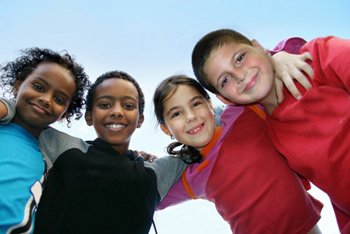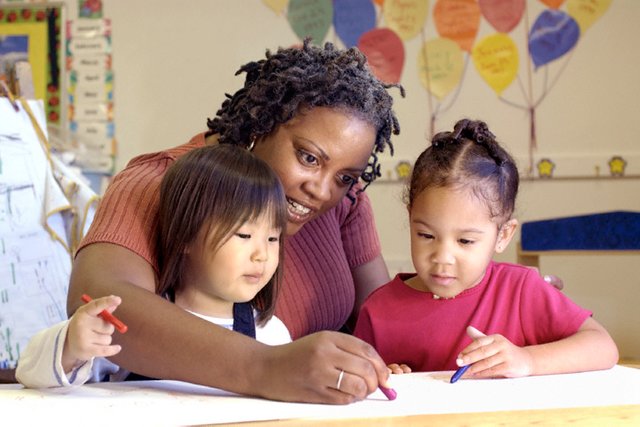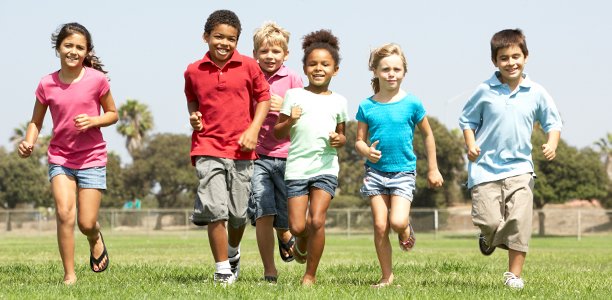Middle childhood

Middle childhood
Definition of childhood
The childhood one of the stages of development experienced by the human, and the pride of their importance in it represents the growth and development and configuration stage, as the body building physically and raise him mentally and behaviorally happen, and depends individuals who live this stage in whole or in part depending on their environment, Kaloboyn, brothers and others, ranging dependence In the performance of their tasks between total and partial dependence as their stage progresses and progresses.

The definition of childhood in the social workers refers to the link between childhood and guidance, a situation in which the maturity of the human being and its adoption in its activities and behaviors on itself, as the child can end the work or his marriage, for example, based on this definition. [1]
Childhood is defined as a period of time or the age range between the birth of a human being and his or her birth. The meanings of the language share the definition in general, [2] so as to agree with the conventional concept of childhood. The dictionaries of sociology and the dictionaries of psychology refer to the same concept Childhood and its attainment. The conventional definition of childhood refers to the stage that begins with the birth of the child and ends with his arrival, and shows the characteristics of his behavior, independence, thinking and building in that period, which is the stage that man has lived from his birth until his arrival. [3]

Some studies suggest that childhood goes on until the individual has matured and is fully developed and attained, and depends on his / her physical and behavioral activities entirely on himself, age, and age. appropriate for that situation may increase the twentieth, [4] while the United Nations is determined by the Convention on the rights of the Child childhood ending the age of meaning wisdom eighteen years at the latest, as known as the Convention on the rights of the Child as the concept of the child (every human being below the age of p Unless the age of majority is attained under the law applicable to it). [5]
Middle childhood
The term "middle childhood" is used for children between the ages of 6 and 9, the age at which children are admitted to school to start their primary education in the first three grades. Their perception of the breadth of their circles and environments expands as the child's relationships grow and the social circle expands and acquires many skills, qualities and characteristics The new phase affects the differences and renewal of the child's growth and composition, and increases self-reliance, increasing independence and self-separation from dependency on parents, and highlight his identity and self-identify individual, and shows in this Stage united with the sexual role of natural and belonging to him. [6]
At this stage, the theoretical thinking that begins to be formed is the result of the student's exposure to new school knowledge, which is a new entrance and a qualitative addition to the child's life. This stage requires special environmental preparation to suit the child's development and formative structure. The child's self-image represents the most important motivations, necessities and priorities, which necessitates reviewing his actions, behavior and skills. On a daily basis, and increases competition for access to high levels of study or sportOr other, and so the reflection of excellence and the standard of admiration is based on the view of the external environment represented by colleagues and teachers and the child's educational circle and comrades. [7]

Characteristics of middle childhood
Children in middle childhood are characterized by a number of characteristics that are classified according to the needs of the child and the impact of the environment. The general characteristics of this stage are structural characteristics that work in the child. The formation of the physical, psychological, behavioral, educational and cognitive formation. The middle childhood is referred to as the quiet childhood language due to the relatively low physical growth Compared with previous and subsequent stages, but the child's social development, behavioral and emotional and other aspects are steadily increasing, given the child's exposure to new cognitive conditions related to the tide The general characteristics of this phase can be summarized as follows: [8]
It begins at this stage to replace primary teeth to replace the permanent baby teeth.
The formation of the child's personality and independence, and the ego that expresses itself with the accompanying additions represented by the child's relations with the school community.
The child's sense of touch develops markedly to reach that of adolescents.
The child's calmness and change of personality character; at this stage, the child's stability is emotional.
The manifestations of growth of children in the middle stage of childhood are physical, emotional, physiological, psychological, motor, sensory and mental, and the manifestations of these developments can be expressed in detail the requirements of the child and the needs of each particular aspect of growth mentioned, and here are some characteristics of each of these features: [9 ]

Physical and physiological growth
The average age of childhood does not carry a lot of physical changes. Physical growth at this stage is slow compared to the previous phases. However, the noticeable difference is the general appearance of the details of the shape of the individual. The physical growth of the children at this stage is summarized as follows:
The slow growth of the body
The length of the body is balanced by a slowdown, as the length of the body increases by 5% per year of this stage.
Physical differences between the sexes appear. The height and weight varies between the stages of the sexes. The males are taller at the end of this stage, while the males and females are roughly equal in weight.
The heart rate decreases, and the level of blood pressure increases.
The length and thickness of nerve fibers increases and the number of neural connections increases.
The average sleep rate decreases to about seven hours at the age of seven.
Motor growth
The growth of the child's small and large muscles is characterized by distinct differences that represent the child's behavior and tendencies towards motor play and the expression of his stimuli in the same manner. The movements of the child tend to be general and have control over his sudden and random movements. The child tends to arrange his own motor needs, etc., the student and mastered at this stage , the development of new skills, such as drawing and playing with mud or clay, characterized by child movements coarseness at this stage Kamilh to climb and jump and play ball, while females keep their movements soft and Slokadtha Calm their games motor.
Sensory growth
The child's perception and relation to numbers, colors and letters can be distinguished. He can distinguish the seasons and understand the counting of the months, weeks and days of the week. His awareness of weight relates to his instruments, materials and nature. His visual perception is consistent with his hand movements, which controls the physical representation of his expressions and grows his visual, auditory and tactile maturity.

Mental growth
The child's mental development accelerates in middle childhood, and is supported by school enrollment and exposure to broader social relationships. He learns basic skills such as arithmetic, writing and reading, highlighting his understanding and memory abilities, and growing his imagination to perpetuate his creativity and coexistence with reality.

References
1- ↑ Selected professors on the meeting at the University of Alexandria, reference in terms of social sciences , Alexandria: Dar al-Maarifah University, page 59.
2- ↑ "Definition and Meaning of Childhood" , Glossary of Meanings .
3- ↑ "Definition of Childhood" , Islam Web .
4- ↑ Tariq al-Bakri (1999), Children's magazines and their role in building the Islamic personality , Kuwait: Publisher's website, page 27.
5- ↑ "Convention on the Rights of the Child" , UNICEF , accessed on 21-2-2017.
6- ↑ Hamid Zahran (1986), The Psychology of Growth , Egypt: Knowledge, p. 206.
7- ↑ Hani Awad (31-1-2014), "Middle childhood and its distinctive signs" , Middle East , read on 2-4-2017.
8- ↑ Mohammed Abu Jaafar, Mohammed Al-Marghani, Yacoub Samama (2002), Psychology of Growth , Libya: Center for Educational Curriculum and Educational Research, pp. 94-99.
9- ↑ Hamid Zahran, Psychology of Growth - Childhood and Adolescence , Egypt: Dar Al Ma'arif, page 206-232
By Alae Jerrar
This post has received gratitude of 2.44 % from @appreciator thanks to: @allizz.
This post has received a 4.21 % upvote from @boomerang thanks to: @allizz
Osmanlı Devletinden günümüze kalan Padişah fermanlarını paylaşıp bunlar hakkında bilgiler vermeyi düşündüğüm bir projem var. Her türlü desteğinizi bekliyorum. Saygılar...
https://steemit.com/ottoman/@yunus98/from-the-ottoman-empire-to-today
https://steemit.com/ottoman/@yunus98/from-the-ottoman-empire-to-today-part-2-osmanli-imparatorlugundan-guenuemueze-2-kisim